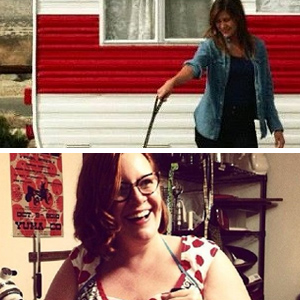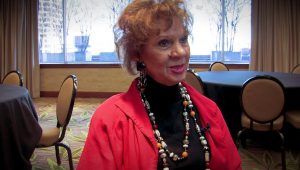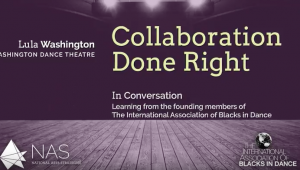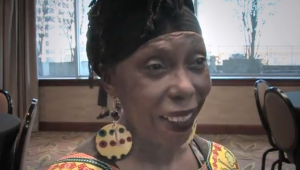
Laurelin: Well, I guess we should start with the most essential question first. How do you define “community?”
Rachel: I tend to always return to Wendell Berry’s definition of community, “a people and their place.” I feel that the two are intimately connected and both worthy of consideration in all plans.
Laurelin: I like that. I think I’d take it to an even more basic level and say I define community as a group of people brought together for a single purpose. Community can be strengthened when these people share an experience or work together toward a common goal.
Do you agree with that? How does this relate to “creative placemaking?”
Rachel: I do. I see us as facilitators and a catalyst for forward momentum. I think the term creative placemaking, in practice, seems to be the newest catch phrase used mainly in funding circles. There have been many cultural projects under the guise of Creative Economy, Cultural Tourism, etc. that have been carried out over the years. I understand why many feel that monetizing the value of arts and artists offers validity to their importance in community life and our national fabric. It also offers a tidy way to quantify and qualify projects in the granting process. I am also of the opinion that doing so de-values artistic and cultural endeavors. There are so many intrinsic qualities to art and culture that are simply unquantifiable and that have value beyond revenue. I feel the fatal flaw in these structures are that they focus on bringing outsiders in rather than strengthening cultural practice from within communities for their own benefit and they treat culture as just another consumable product to be sold. In some ways it validates the importance of art and culture, but in so many other ways it does not.
Laurelin: What are some of the intrinsic qualities to art and culture that you see in the work you do?
Rachel: Cultural conversations are a wonderful way to bring a diversity of people together and bridge conversations between them that can lead to a strengthened community. That’s not one of the measurable qualities in the grants I’m used to working with. We’re in a super rural place. There are less than 11,000 people in the entire county. More people have died than have been born here for over 30 years, but the population is still growing. People find Oregon County because it’s cheap, beautiful, and, in general, it operates on what I refer to as an “economy of neighborliness.” These newcomers — myself included — bring a different energy that is complemented by the generational families that have crafted a way of living in a place with few jobs.
Laurelin: How do you bring these people together? I think that’s one of the most difficult parts of community organizing, getting people into the same room. For me, music has always been a way to get people together, whether that was through my experience throwing shows at the local coffee shop as a teenager in my small town (where, especially as a teenager, it seemed nothing ever happened) or putting on house concerts in the basement of my house in college. Recently, I organized a series of house concerts in rural towns and found it to be an amazing coming together of rowdy little kids, bored teens, and older generations who had been in the area their entire lives. It was also fascinating to have these people who had never met each other come together in the intimate space of someone’s living room.
Rachel: I think you’re exactly right! You have to immerse yourself in place enough to know what that “it” thing will be. For us, it’s been small-scale food production and consumption.
I think creating a welcoming space is critical. Every time we have an event, all kinds of people come. People connect too just in the daily operations of co-op. We’ve added a community kitchen, a cultural library of music, books, and art, and, when people are hanging out in there, they’re talking about things like “where’s the best place to get hay around here?” or “where can I find raw milk?” Soon, they find commonalities and that allow for a space where you can introduce more critical community issues. They might have vastly different religious or political beliefs, but creating an environment where they know it’s safe to contribute is pretty powerful stuff.
Laurelin: Can you talk more about the project you’ll be working on with CCF and how you got started?
Rachel: I work mainly in Oregon County Missouri, a sparsely populated county in the southern Missouri Ozarks. I have worked to organize food producers and artisans into a cooperative for the last few years. I’m from the Ozarks and my background is in folklore, mainly working with traditional artists. I moved to Oregon County eight years ago and immediately fell in love with this corner of the Ozark hills. My husband is also a folklorist and, for both personal and professional reasons, we have been interested in foodways or the way that food is produced, prepared, and exchanged and the oral traditions associated with these practices. Pretty early on in our Oregon County journey, we realized that food production was a big deal here, although all small-scale and decentralized. There are some pretty depressing socio-economic statistics in our county. Historically and today folks have produced food and exchanged it with neighbors for other goods and services as a way of being able to stay. I began to think of what could happen if we centralized this exchange in one location and how it could be used to bring people together both for community fellowship and as a means to address community needs.
Laurelin: It’s compelling to me that you have a background as a folklorist and are now working as a librarian.
Rachel: Well, I’m sort of an accidental librarian, enthusiastic, but accidental. I still work as a folklorist too. In many ways, I consider OCFPAC a folklore project.
Laurelin: I worked in two rare books libraries in college and after graduating my first job was in archives at an artist foundation in New York City. It got me thinking about how we value things, what we choose to preserve, and how our decision to archive or showcase something in a museum impacts its meaning. I thought it was crazy that several people were working full-time to document every detail of the work of one dead artist (for the purpose of scholarship, but also for the purpose of increasing the monetary value of these works). So, I thought I’d do something equally as crazy and create a museum and archive dedicated to everyday people, their objects and their stories. So there’s my project, the Mobile Museum of American Artifacts (MMoAA).
It’s been hard though. I’ve been in the planning stages for about a year and just launched MMoAA two days ago in collaboration with the non-profit Artspace in New Haven, CT. I’m reinvigorated by that, but for awhile, I was getting so bogged down in logistics the project felt nearly impossible. What keeps you motivated?
Rachel: My driving force is most definitely the people of Oregon County and the beauty of the place. Also, the way our Oregon County Food Producers and Artisans Co-Op is structured, with everyone having an equal say in how the project evolves, it is a very organic process. There’s never a dull moment in the project. It’s constantly evolving even though the processes are sometimes very slow and in ways I do not always anticipate. My hero in all of this, Wendell Berry, told me that I needed to think of my work as being “generations long.” I’ve threatened to embroider that on a pillow, but thinking of working to establish and sustain these efforts on a generational scale is important enough to keep me going. How about you?
Laurelin: It’s so important to be patient and keep in mind the long view, which I’ll admit is a challenge for me. I plan to create an online archive component to MMoAA, and the goal is to preserve people’s stories, but I also see it as an ephemeral project in a sense. It’s counterintuitive to call a museum ephemeral, but given its itinerant nature, MMoAA won’t be a permanent fixture in any one community. Even more than serving as a record, I hope the project will make people think about the stories we tell ourselves about ourselves and the institutions involved in creating and assigning value to these narratives.
Rachel: I’m so intrigued with this project. I really admire your point of view with this.
Laurelin: What’s the role of cultural entrepreneurs in the cultural sector? What’s your model for running the co-op?
Rachel: The most interesting quality about the entrepreneurship model for cultural work is that, at this time, it is the best model for being able to develop and implement cultural projects that are locally adapted to the places that we work and serve. Ultimately, I think that is the key to long-term success. While conversations seem to be shifting in the world of arts-and-culture granting agencies toward a more open model, it is difficult to secure funding, for many rural communities in particular, using a national rubric that, understandably, is not going to work for every place. For cultural efforts to be sustainable, they must be reactive to local needs and resources. The entrepreneurship model offers that flexibility. Also, in our case, the structure of our entrepreneurial effort is one hundred percent volunteer based and we give one hundred percent of profits back into the communities as mutual aid. The members have an equal voice in how the money is distributed and to whom. This reinforces the sense of responsibility that we all have to the organization and to each other in ways that a grant would neither encourage nor allow for.
Laurelin: Do you feel like you’re part of the “cultural field” or “culture sector?” I often think about how my roles differ as a singer and songwriter vs. the leader of a project like MMoAA. I wonder how these separate parts of my life are compatible and whether they will begin to influence each other.
Rachel: Definitely! Here’s another way that cultural entrepreneurship is an effective model. It gives you the freedom to piece these things together in meaningful ways. I may be organizing food producers for a workshop, working on an exhibit for an art gallery, writing for a publication, working in arts and culture policy, cooking, doing field recordings, processing new books at my library, or playing fiddle, but I see all of these daily activities as cultural work and find them equally important and part of a whole. I am thankful to have been able to be involved so intimately with my home community and also allowed to participate in national conversations in a variety of fields, but I would consider them all equally important aspects of the cultural sector. I would encourage you to stew on the ways that your writing and singing informs your aesthetic and thought process in creating and sharing your project!
Laurelin: Alright, should we wrap up with the fill in the blank? Creative/cultural work makes communities _______.
Rachel: Do I have to pick one? Vibrant, dynamic, sustainable.
Laurelin: And I think I’ll just take out the blank and end that statement with a period. Creative/cultural work makes communities.


